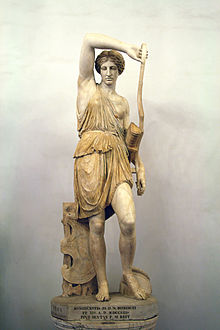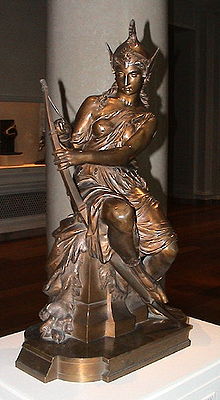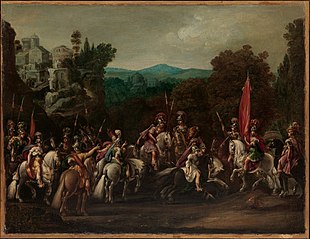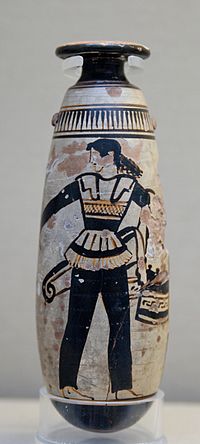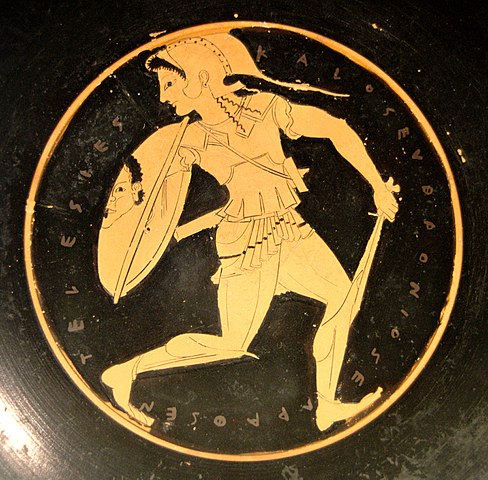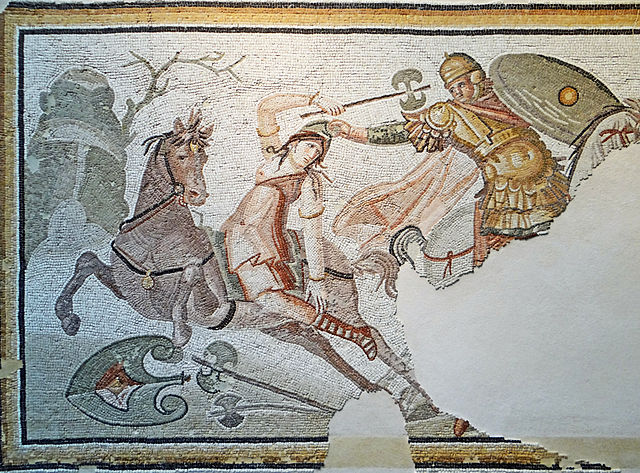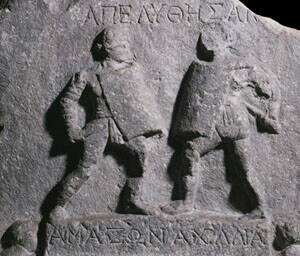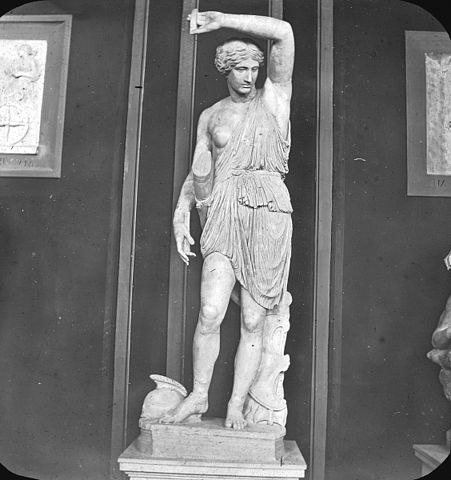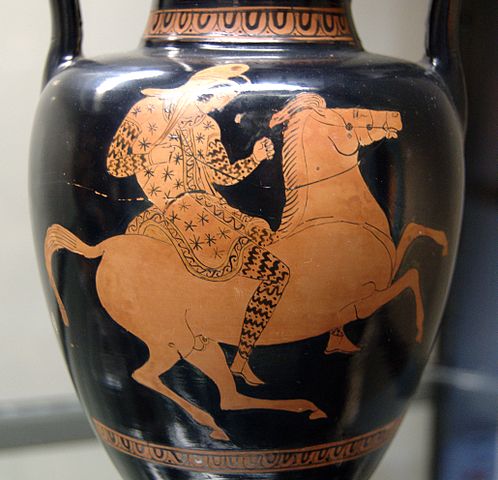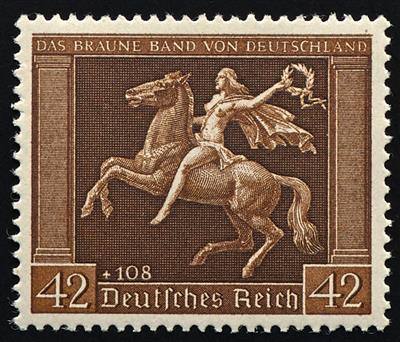
| AMAZON WOMEN WARRIORS PART - 1 Note : This article has multiple issues.
Wounded Amazon of the Capitoline Museums, Rome In Greek mythology, the Amazons (Ancient Greek: Amazónes) were a tribe of warrior women believed to live in Asia Minor. Apollonius Rhodius, in his Argonautica, mentions that the Amazons were the daughters of Ares and Harmonia (a nymph of the Akmonian Wood), that they were brutal and aggressive, and their main concern in life was war. Lysias, Isocrates, Philostratus the Elder also said that their father was Ares.
Herodotus and Strabo place them on the banks of the Thermodon River. According to Diodorus, giving the account of Dionysius of Mitylene (who in turn drew on Thymoetas), the Amazons inhabited Ancient Libya long before they settled along the Thermodon. Migrating from Libya, these Amazons passed through Egypt and Syria, and stopped at the Caïcus in Aeolis, near which they founded several cities. Later, Diodorus maintains, they established Mytilene a little way beyond the Caïcus. Aeschylus, in Prometheus Bound, places the original home of the Amazons in the country about Lake Maeotis, and from which they moved to Themiscyra on the Thermodon. Homer tells that the Amazons were sought and found somewhere near Lycia.
Amazon preparing for a battle (Queen Antiop or Armed Venus), by Pierre-Eugène-Emile Hébert, 1860, National Gallery of Art, Washington, D.C. Notable queens of the Amazons are Penthesilea, who participated in the Trojan War, and her sister Hippolyta, whose magical girdle, given to her by her father Ares, was the object of one of the labours of Heracles. The Amazons fought on the side of Troy against the Greeks during the Trojan War. Diodorus mentions that the Amazons traveled from Libya under Queen Myrina. Amazon warriors were often depicted in battle with Greek warriors in amazonomachies in classical art. Archaeological discoveries of burial sites with female warriors on the Eurasian Steppes suggest that the Scythian women may have inspired the Amazon myth. From the early modern period, their name has become a term for female warriors in general. Amazons were said to have founded the cities and temples of Smyrna, Sinope, Cyme, Gryne, Ephesus, Pitania, Magnesia, Clete, Pygela, Latoreria and Amastris; according to legend, the Amazons also invented the cavalry.
Palaephatus, who was trying to rationalize the Greek myths in his On Unbelievable Tales, wrote that the Amazons were probably men who were mistaken for women by their enemies because they wore clothing which reached their feet, tied up their hair in headbands and shaved their beards, and in addition, because they did not exist during his time, most probably they did n?t exist in the past either. In 2019 a grave with Amazons in golden royal crowns was found near Russia's Voronezh.
Etymology :
Departure of the Amazons, by Claude Deruet, 1620, Metropolitan Museum of Art, New York The origin of the word is uncertain. It may be derived from an Iranian ethnonym *ha-mazan- "warriors", a word attested indirectly through a derivation, a denominal verb in Hesychius of Alexandria's gloss ("hamazakaran: 'to make war' in Persian"), where it appears together with the Indo-Iranian root *kar- "make".
It may also be derived from "manless, without husbands" (a- privative and a derivation of *man- also found in Slavic muzh) has been proposed, an explanation deemed "unlikely" by Hjalmar Frisk. A further explanation proposes Iranian *ama-janah "virility-killing" as source.
The Hittite researcher Friedrich Cornelius assumes that there had been the land Azzi with the capital Chajasa in the area of the Thermodon-Iris Delta on the coast of the Black Sea. He brings its residents in direct relation to the Amazons, namely based on its name (woman of the land Azzi = 'Am'+ 'Azzi' = Amazon) and its customs (matriarchal custom of promiscuous sexual intercourse, even with blood relatives). The location of that land as well as his conclusions are controversial.
—
Gerhard Pollauer [self-published source]
Origins :
Amazon wearing trousers and carrying a shield with an attached patterned cloth and a quiver. Ancient Greek Attic white-ground alabastron, c.470 BC, British Museum, London Herodotus and Strabo placed the Amazons on the banks of the Thermodon (today's Terme river) and Themiscyra (probably close to the modern city of Terme). Herodotus also mentions that some Amazons lived in Scythia because after the Greeks defeated the Amazons in battle, they sailed away carrying in three ships as many Amazons as they had been able to take alive, but out at sea the Amazons attacked the crews and killed them, then these Amazons landed on Scythian lands. Strabo writes that the original home of the Amazons was in Themiscyra and the plains about Thermodon and the mountains that lie above them, but that they were later driven out of these places, and during his time they were said to live in the mountains above Caucasian Albania (not to be confused with the modern Albania). But he also states that some others, among them Metrodorus of Scepsis and Hypsicrates, say that after Themiscyra, the Amazons traveled and lived on the borders of the Gargarians, in the northerly foothills of those parts of the Caucasian Mountains which are called Ceraunian.
Aeschylus, in Prometheus Bound, places the original home of the Amazons in the country about Lake Maeotis and they later moved to Themiscyra on the Thermodon. Homer had placed the Amazons much closer to the Greek world of his times, saying that the Amazons were sought and found somewhere near Lycia.
Diodorus Siculus, giving the account of Dionysius of Mitylene, who, on his part, drew on Thymoetas, states that before the Amazons of the Thermodon there were, much earlier in time, the Amazons of Libya. These Amazons started from Libya passed through Egypt and Syria, and stopped at the Caïcus in Aeolis, near which they founded several cities. Later, he says, they established Mitylene a little way beyond the Caïcus.
Plutarch mentions that the campaigns of Heracles and Theseus against the Amazons took place on the Euxine Sea (the modern Black Sea). According to Pseudo-Plutarch, the Amazons lived in and about the Tanais river (modern Don river), formerly called the Amazonian or Amazon river, because the Amazons bathed themselves therein. The Amazons later moved to Themiscyra (speculated to be modern Terme, though no ruins exist) on the River Thermodon (the Terme river in northern Turkey).
The Amazons were supposed to have founded many towns, amongst them Smyrna, Ephesus, Cyme, Myrina, Sinope, Paphos, Mitylene. At Patmos there was a place called Amazonium. Also, on the island of Lemnos, there was another Myrina. The cities of Myrina had this name after the amazon Myrina.
Apollonius Rhodius, in his Argonautica (third century BC), mentions that at Thermodon the Amazons were not gathered together in one city, but scattered over the land, parted into three tribes. In one part dwelt the Themiscyreians, in another the Lycastians, and in another the Chadesians.
Other names :
Greeks also used other descriptive phrases for them. Herodotus used the Androktones (Androktona) ("killers/slayers of men") and Androleteirai (Androleteira) ("destroyers of men, murderesses"), in the Iliad they are also called Antianeirai (Antianeira) ("equivalent to men") and Aeschylus used the Styganor ("those who loathe all men") in his work Prometheus Bound and in the Suppliant Maidens he called them ("the unwed, flesh-devouring Amazons"). In Hippolytus play, Phaedra calls Hippolytus, "the son of the horse-loving Amazon". Nonnus at Dionysiaca call the Amazons of Dionysus, Androphonus ("men slaying").
Herodotus stated that in the Scythian language they were called Oiorpata, oior meaning "man", and pata meaning "to slay".
Historical
background :
Nevertheless, there are various proposals for a historical nucleus of the Amazons of Greek historiography, the most obvious candidates being historical Scythia and Sarmatia in line with the account by Herodotus, but some authors prefer a comparison to cultures of Asia Minor or even Minoan Crete.
Mythology
:
The Amazons appear in Greek art of the Archaic period and in connection with several Greek legends and myths. According to the Iliad, Amazons attacked the Phrygians, who were assisted by Priam, then a young man. In his later years, however, towards the end of the Trojan War, his old opponents took his side against the Greeks under their queen Penthesilea "of Thracian birth", who was slain by Achilles. The Lycian King Iobates sent Bellerophon against the Amazons, hoping that they would kill him, but Bellerophon killed them all.
The Amazons appear in Greek art of the Archaic period and in connection with several Greek legends and myths. According to the Iliad, Amazons attacked the Phrygians, who were assisted by Priam, then a young man. In his later years, however, towards the end of the Trojan War, his old opponents took his side against the Greeks under their queen Penthesilea "of Thracian birth", who was slain by Achilles. The Lycian King Iobates sent Bellerophon against the Amazons, hoping that they would kill him, but Bellerophon killed them all.
The tomb of Myrine is mentioned in the Iliad; later interpretation made an Amazon of her. According to Diodorus, the Amazons under the rule of Queen Myrina, invaded the lands of the Atlantians. Amazons defeated the army of the Atlantian city of Cerne, treated the captives savagely, killed all the men, led into slavery the children and women, and razed the city. When the terrible fate of the inhabitants of Cerne became known among the other Atlantians, they were struck with terror, surrendered their cities on terms of capitulation and announced that they would do whatever should be commanded them. Queen Myrina bearing herself honourably towards the Atlantians, established friendship with them and founded a city to bear her name in place of the city of Cerne which had been razed; and in it she settled both the captives and any native who so desired. Atlantians presented her with magnificent presents and by public decree voted to her notable honours, and she in return accepted their courtesy and in addition promised that she would show kindness to their nation. Diodorus also mentions that the Amazons of Queen Myrina used the skins of gigantic snakes, from Libya, to protect themselves at battle. Later Queen Myrine led her Amazons to victory against the Gorgons. After the battle against the Gorgons, Myrina accorded a funeral to her fallen comrades on three pyres and raised up three great heaps of earth as tombs, which are called "Amazon Mounds".
Dealings with the Scythians :
Herodotus mentions that when Greeks defeated the Amazons at war, they sailed away carrying in three ships as many Amazons as they had been able to take alive, out at sea the Amazons attacked the crews and killed them. But the Amazons knew nothing about ships so they were driven about by waves and winds and they were disembarked at the land of the Scythians. There they met first with a troop of horses feeding, they seized them and mounted upon these they plundered the property of the Scythians. The Scythians were not able to understand them because they did not know either their speech or their dress or the race to which they belonged, and they thought that they were men. Scythians fought a battle against them, and after the battle the Scythians got possession of the bodies of the dead, and thus they discovered that they were women. After the battle Scythians sent young men and told them to encamp near the Amazons and to do whatsoever they should do. If the women should come after them, they were not to fight but to retire before them, and when the women stopped, they were to approach near and encamp.
This plan was adopted by the Scythians because they desired to have children born from them. When the Amazons perceived that they had not come to do them any harm, they let them alone; and the two camps approached nearer to one another every day: and the young men, like the Amazons, had nothing except their arms and their horses and got their living, as the Amazons did, by hunting and by taking booty. One day a Scythian and an Amazon came close. They could not speak to each other because they were speaking different languages, but the Amazon made signs to him with her hand to come. Later the young Scythians and the Amazons joined their camps and lived together, each man having for his wife her with whom he had had dealings at first. The men were not able to learn the language of the Amazons, but the women learned Scythian.
The
Amazons in their homeland :
Strabo also stated that the Gargareans went up from Themiscyra into this region with the Amazons, then, in company with some Thracians and Euboeans who had wandered thus far, waged war against them. They later ended the war against the Amazons and made a compact that they should have dealings with one another only in the matter of children, and that each people should live independent of the other. In addition, he states that the right breasts of all Amazons are seared when they are infants, so that they can easily use their right arm for every needed purpose, and especially that of throwing the javelin and using the bow.
Apollonius Rhodius, in his Argonautica, mentions that Amazons were the daughters of Ares and Harmonia (a nymph of the Akmonian Wood). They were brutal and aggressive, and their main concern in life was war. According to him, the Amazons were not gathered together in one city, but scattered over the land, parted into three tribes. In one part dwelt the Themiscyreians, in another the Lycastians, and in another the Chadesians. Also, he mentions that on an island, the Queens of the Amazons, Otrere and Antiope, built a marble temple to Ares. On this desert island there were ravening birds, which in countless numbers haunt it. The island mentioned is the Aretias. Argonauts passed by Themiscyra on their journey to Colchis. Zeus sent Boreas (the North Wind), and with his help the Argonauts stood out from the shore near Themiscyra where the Themiscyreian Amazons were arming for battle.
Battles
with Hercules and Theseus, dealings with Alexander the Great :
The battle between the Athenians and Amazons is often commemorated in an entire genre of art, amazonomachy, in marble bas-reliefs such as from the Parthenon or the sculptures of the Mausoleum of Halicarnassus. In The Eumenides, Athena says to the citizens of Attica that Amazons used the Areopagus as a camp during their campaign against Athens and Theseus. Plutarch, in his Parallel Lives (The Life of Theseus), mentions that Bion said that the Amazons, were naturally friendly to men, and did not fly from Theseus when he touched upon their coasts.
Amazons are also heard of in the time of Alexander, when some of the king's biographers make mention of the Amazon Queen Thalestris visiting him and becoming a mother by him (the story is known from the Alexander Romance). However, several other biographers of Alexander dispute the claim, including the highly regarded secondary source, Plutarch. In his writing he makes mention of a moment when Alexander's secondary naval commander, Onesicritus, was reading the Amazon passage of his Alexander history to King Lysimachus of Thrace who was on the original expedition: the king smiled at him and said "And where was I, then?".
Battles
with and against Dionysus :
In another myth Dionysus united with the Amazons to fight against Cronus and the Titans. Polyaenus writes that after Dionysus had subdued the Indians, he formed an alliance with them and the Amazons, and took them into his service. He later used them in his campaign against the Bactria. Nonnus in his Dionysiaca writes about the Amazons of Dionysus, but he says that they were not from Thermodon.
Afterlife
of a myth :
Virgil's characterization of the Volscian warrior maiden Camilla in the Aeneid borrows heavily from the myth of the Amazons. Philostratus, in Heroica, writes that the Mysian women fought from horses alongside the men, just as the Amazons did, and the leader was Hiera, wife of Telephus.
The Amazons are also said to have undertaken an expedition against the island of Leuke, at the mouth of the Danube, where the ashes of Achilles had been deposited by Thetis. The ghost of the dead hero appeared and so terrified the horses, that they threw and trampled upon the invaders, who were forced to retire. Pompey is said to have found them in the army of Mithridates.
Jordanes' Getica (c. 560 CE), purporting to give the earliest history of the Goths, relates that the Goths' ancestors, descendants of Magog, originally dwelt within Scythia, on the Sea of Azov between the Dnieper and Don Rivers. After a few centuries, following an incident where the Goths' women successfully fended off a raid by a neighboring tribe, while the menfolk were off campaigning against Pharaoh Vesosis, the women formed their own army under Marpesia and crossed the Don, invading Asia. Her sister Lampedo remained in Europe to guard the homeland. They procreated with men once a year. These Amazons conquered Armenia, Syria, and all of Asia Minor, even reaching Ionia and Aeolis, holding this vast territory for 100 years. Jordanes also mentions that they fought with Hercules, and in the Trojan War, and that a smaller contingent of them endured in the Caucasus Mountains until the time of Alexander. He mentions by name the Queens Menalippe, Hippolyta, and Penthesilea.
In the Grottaferrata Version of Digenes Akritas, the twelfth century medieval epic of Basil, the Greek-Syrian knight of the Byzantine frontier, the hero battles with and kills the female warrior Maximo, descended from some Amazons and taken by Alexander from the Brahmans.
Names :
There are several conflicting lists of names of Amazons.
Quintus Smyrnaeus :
A helmeted Amazon with her sword and a shield bearing the Gorgon head image, Tondo of an Attic red-figure kylix, 510–500 BC, Staatliche Antikensammlungen, Berlin Quintus Smyrnaeus lists the attendant warriors of Penthesilea: "Clonie was there, Polemusa, Derinoe, Evandre, and Antandre, and Bremusa, Hippothoe, dark-eyed Harmothoe, Alcibie, Derimacheia, Antibrote, and Thermodosa glorying with the spear."
Diodorus
Siculus :
Diodorus also lists another group of Amazons in book 3. He mentions Myrina as the queen who commanded the Amazons in a military expedition in Lybia, as well as her sister Mytilene, after whom she named the city of the same name. Myrina also named three more cities after the Amazons who held the most important commands under her, Cyme, Pitane, and Priene.
Justin and Paulus Orosius :
A hippeis rider seizes a mounted Amazonian warrior (armed with a labrys) by her Phrygian cap, Roman mosaic emblema (marble and limestone) from Daphne, a suburb of Antioch-on-the-Orontes (now Antakya in Turkey), second half of the 4th century AD, now in the Louvre, Paris Both Justin in his Epitome of Trogus Pompeius and Paulus Orosius give an account of the Amazons, citing the same names. Queens Marpesia and Lampedo shared the power during and incursion in Europe and Asia, where they were slain. Marpesia's daughter Orithyia succeeded them and was greatly admired for her skill on war. She shared power with her sister Antiope, but she was engaged in war abroad when Heracles attacked. Two of Antiope's sisters were taken prisoner, Menalippe by Heracles and Hippolyta by Theseus. Heracles latter restored Menalippe to her sister after receiving the queen's arms in exchange, though, on other accounts she was killed by Telamon. They also mention Penthesilea's role in the Trojan War.
Justin is the only who mentions another queen, Minithya or Thalestris, who shared the bed of Alexander the Great in order to conceive, while Paulus mentions Sinope, successor of Lampedo and Marpesia.
Hyginus
:
Perhaps the most important is Queen Otrera, consort of Ares and mother by him of Hippolyta and Penthesilea. She's also known for building a temple to Artemis at Ephesus.
Valerius
Flaccus :
John
Tzetzes :
Stephanus
of Byzantium and Eustathius :
Stephanus also mentions other Amazons in other entries of his work :
•
Amastris, who was believed to be the eponym of the city previously
known as Kromna, although the city was actually named after the
historical Amastris.
•
Aegea, queen of the Amazons who was thought by some to have been
the eponym of the Aegean Sea.
At both Chalcis and Athens, Plutarch tells us that there was an Amazoneum or shrine of Amazons that implied the presence of both tombs and cult. At the entrance of Athens there was a monument to the Amazon Antiope. On the day before the Thesea at Athens there were annual sacrifices to the Amazons. In the Axiochus, mention about an Amazonian stele near the Itonian Gate at Athens. In historical times Greek maidens of Ephesus performed an annual circular dance with weapons and shields that had been established by Hippolyta and her Amazons. They had initially set up wooden statues of Artemis, a bretas (Pausanias, (AD 160): Description of Greece, Book I: Attica).
Harpokration mention that Ammonius of Athens in his book "On Altars and Sacrifices" writes that the Amazons founded the Amazoneion sanctuary at Athens.
In art :
Two female gladiators with their names Amazonia and Achillea In works of art, battles between Amazons and Greeks are placed on the same level as – and often associated with – battles of Greeks and centaurs. The belief in their existence, however, having been once accepted and introduced into the national poetry and art, it became necessary to surround them as far as possible with the appearance of natural beings. Amazons were therefore depicted in the manner of Scythian or Sarmatian horsemen. Their occupation was hunting and war; their arms the bow, spear, axe, a half shield, nearly in the shape of a crescent, called pelta, and in early art a helmet. The model in the Greek mind had apparently been the goddess Athena. In later art they approach the model of Artemis, wearing a thin dress, girt high for speed; while on the later painted vases their dress is often peculiarly Persian – that is, close-fitting trousers and a high cap called the kidaris. They were usually on horseback but sometimes on foot. This depiction of Amazons demonstrates just how closely, in the Greek mind, the Amazons were linked to the Scythians.
Their manner of dress has been noted to bear a striking similarity to the traditional dress of nomadic peoples from the Crimea to Mongolia. Amazons were described by Herodotus as wearing trousers and having tall stiff caps.[citation needed] The double-sided axe was the most emblematic of their weapons. Amazons can also be identified in vase paintings by the fact that they are wearing one earring. The battle between Theseus and the Amazons (Amazonomachy) is a favourite subject on the friezes of temples (e.g. the reliefs from the frieze of the Temple of Apollo at Bassae, now in the British Museum), vases and sarcophagus reliefs; at Athens it was represented on the shield of the statue of Athena Parthenos, on wall-paintings in the Theseum and in the Stoa Poikile. There were also three standard Amazon statue types.
In the Essays in Portraiture, Lucian of Samosata ask Polystratos which, he think, is the best work of Phidias and Polystratos respond "The Lemnian Athene, which bears the artist's own signature; and of course the Amazon leaning on her spear."
Later in the Renaissance, as Amazon myth evolved, artists started to depict warrior women in a new light. Queen Elizabeth was often thought of as an Amazon-like warrior during her reign and was sometimes depicted as such. Though, as explained in Divinia Viagro by Winfried Schleiner, Celeste T. Wright "has given a detailed account of the bad press Amazons had in the Renaissance (with respect to their unwomanly conduct and Scythian cruelty). She notes that she has not found any Elizabethans comparing the queen directly to an Amazon, and suggests that they might have hesitated to do so because of the association of Amazons with enfranchisement of women, which was considered contemptible."
Peter Paul Rubens and Jan Brueghel depicted the Battle of the Amazons around 1598, showing many attributes of Renaissance-styled paintings. Amazons also appear in the Rococo period in another painting titled Battle of the Amazons by Johann Georg Platzer. As a part of the Romantic period revival, German artist Anselm Feuerbach painted the Amazons as well. His paintings “engendered all the aspirations of the Romantics: their desire to transcend the boundaries of the ego and of the known world; their interest in the occult in nature and in the soul; their search for a national identity, and the ensuing search for the mythic origins of the Germanic nation; finally, their wish to escape the harsh realities of the present through immersion in an idealized past.”
In historiography :
Amazon in combat, infl.[further explanation needed] Polyclitus, Rome, now in the Brooklyn Museum Archives, Goodyear Archival Collection Herodotus reported that the Sarmatians were descendants of Amazons and Scythians, and that their wives observed their ancient maternal customs, "frequently hunting on horseback with their husbands; in war taking the field; and wearing the very same dress as the men". Moreover, said Herodotus, "No girl shall wed till she has killed a man in battle". In the story related by Herodotus, a group of Amazons was blown across the Maeotian Lake (the Sea of Azov) into Scythia near the cliff region (today's southeastern Crimea). After learning the Scythian language, they agreed to marry Scythian men, on the condition that they not be required to follow the customs of Scythian women. According to Herodotus, this band moved toward the northeast, settling beyond the Tanais (Don) river, and became the ancestors of the Sauromatians. According to Herodotus, the Sarmatians fought with the Scythians against Darius the Great in the 5th century BC.
Xenophon in Anabasis writes that Democrates of Temnus captured a man with a Persian bow, a quiver and a battleaxe of the same sort that Amazons carry.
Hippocrates describes them as: "They have no right breasts...for while they are yet babies their mothers make red-hot a bronze instrument constructed for this very purpose and apply it to the right breast and cauterize it, so that its growth is arrested, and all its strength and bulk are diverted to the right shoulder and right arm."
Amazons came to play a role in Roman historiography. Caesar reminded the Senate of the conquest of large parts of Asia by Semiramis and the Amazons. Successful Amazon raids against Lycia and Cilicia contrasted with effective resistance by Lydian cavalry against the invaders (Strabo 5.504; Nicholas Damascenus). Gnaeus Pompeius Trogus pays particularly detailed attention to the Amazons. The story of the Amazons as deriving from a Cappadocian colony of two Scythian princes Ylinos and Scolopetos is due to him. Pliny the Elder records some surprising facts pointing to the valley of the Terme River as possibly being their home: a mountain named for them (the modern Mason Dagi), as well as a settlement Amazonium; Herodotus (VI.86) first mentions their capital Themiscyra, which Pliny locates near the Terme. Philostratus places the Amazons in the Taurus Mountains. Ammianus places them east of Tanais, as neighbouring the Alans. Procopius places them in the Caucasus. Diodorus Siculus (Bibliotheca historica III, chapter 52) mentioned that besides Pontus Amazons existed much older race (at that time entirely disappeared) of Amazons from western Libya, and retells their mythological story which includes Atlantis and Greek mythology.
Although Strabo shows skepticism as to their historicity, the Amazons in general continue to be taken as historical throughout Late Antiquity. Several Church Fathers speak of the Amazons as of a real people. Solinus embraces the account of Pliny. Under Aurelianus, captured Gothic women were identified as Amazons (Claudianus). The account of Justinus was influential, and was used as a source by Orosius who continued to be read during the European Middle Ages. Medieval authors thus continue the tradition of locating the Amazons in the North, Adam of Bremen placing them at the Baltic Sea and Paulus Diaconus in the heart of Germania.
Pausanias at the Description of Greece writes that near Pyrrhichus there were sanctuaries of the gods Artemis, called Astrateia, and Apollo, called Amazonius with images of the gods said to have been dedicated by the women from Thermodon.
Medieval and Renaissance literature :
Amazons continued to be discussed by authors of the European Renaissance, and with the Age of Exploration, they were located in ever more remote areas. In 1542, Francisco de Orellana reached the Amazon River (Amazonas in Spanish), naming it after a tribe of warlike women he claimed to have encountered and fought on the Nhamundá River, a tributary of the Amazon. Afterwards the whole basin and region of the Amazon (Amazônia in Portuguese, Amazonía in Spanish) were named after the river. Amazons also figure in the accounts of both Christopher Columbus and Walter Raleigh. Famous medieval traveller John Mandeville mentions them in his book:
Beside the land of Chaldea is the land of Amazonia, that is the land of Feminye. And in that realm is all woman and no man; not as some may say, that men may not live there, but for because that the women will not suffer no men amongst them to be their sovereigns.
Medieval and Renaissance authors credit the Amazons with the invention of the battle-axe. This is probably related to the sagaris, an axe-like weapon associated with both Amazons and Scythian tribes by Greek authors (see also Thracian tomb of Aleksandrovo kurgan). Paulus Hector Mair expresses astonishment that such a "manly weapon" should have been invented by a "tribe of women", but he accepts the attribution out of respect for his authority, Johannes Aventinus.
Ariosto's Orlando Furioso contains a country of warrior women, ruled by Queen Orontea; the epic describes an origin much like that in Greek myth, in that the women, abandoned by a band of warriors and unfaithful lovers, rallied together to form a nation from which men were severely reduced, to prevent them from regaining power. The Amazons and Queen Hippolyta are also referenced in Geoffrey Chaucer's Canterbury Tales in "The Knight's Tale".
Archaeology
:
Riding Amazon in Scythian costume, Attic red-figure vase, c.420 BC, Staatliche Antikensammlungen, Munich Speculation that the idea of Amazons contains a core of reality is based on archaeological findings from burials, pointing to the possibility that some Sarmatian women may have participated in battle. These findings have led scholars to suggest that the Amazonian legend in Greek mythology may have been "inspired by real warrior women".
Evidence of high-ranking warrior women comes from kurgans in southern Ukraine and Russia. David Anthony notes, "About 20% of Scythian-Sarmatian 'warrior graves' on the lower Don and lower Volga contained women dressed for battle similar to how men dress, a phenomenon that probably inspired the Greek tales about the Amazons."
Up to 25% of military burials were of armed Sarmatian women usually including bows. Russian archaeologist Vera Kovalevskaya points out that when Scythian men were away fighting or hunting, nomadic women would have to be able to defend themselves, their animals and pasture-grounds competently. During the time that the Scythians advanced into Asia and achieved near-hegemony in the Near East, there was a period of twenty-eight years when the men would have been away on campaigns for long periods. During this time the women would not only have had to defend themselves, but to reproduce, and this could well be the origin of the idea that Amazons mated once a year with their neighbours, if Herodotus actually based his accounts on fact.
Before modern archaeology uncovered some of the Scythian burials of warrior-maidens entombed under kurgans in the region of Altai Mountains and Sarmatia, giving concrete form at last to the Greek tales, the origin of the Amazon story had been the subject of speculation among classics scholars. In the 1911 Encyclopædia Britannica speculation ranged along the following lines:
While some regard the Amazons as a purely mythical people, others assume an historical foundation for them. The deities worshipped by them were Ares (who is consistently assigned to them as a god of war, and as a god of Thracian and generally northern origin) and Artemis, not the usual Greek goddess of that name, but an Asiatic deity in some respects her equivalent. It is conjectured that the Amazons were originally the temple-servants and priestesses (hierodulae) of this goddess; and that the removal of the breast corresponded with the self-mutilation of the god Attis and the galli, Roman priests of Rhea Cybele. Another theory is that, as the knowledge of geography extended, travellers brought back reports of tribes ruled entirely by women, who carried out the duties which elsewhere were regarded as peculiar to man, in whom alone the rights of nobility and inheritance were vested, and who had the supreme control of affairs. Hence arose the belief in the Amazons as a nation of female warriors, organized and governed entirely by women. According to J. Viirtheim (De Ajacis origine, 1907), the Amazons were of Greek origin [...] It has been suggested that the fact of the conquest of the Amazons being assigned to the two famous heroes of Greek mythology, Heracles and Theseus [...] shows that they were mythical illustrations of the dangers which beset the Greeks on the coasts of Asia Minor; rather perhaps, it may be intended to represent the conflict between the Greek culture of the colonies on the Euxine and the barbarism of the native inhabitants.
Minoan
Crete :
Modern legacy :
Amazon on a special stamp promoting German horse races in the 1930s Niketas Choniates wrote that when the Germans attacked during the Emperor Manuel I Komnenos reign, females were numbered among them riding horses and bearing weapons and they were like the Amazons. Added that one stood out from the rest as another Penthesilea.
Francisco de Orellana gave the Amazon river its name after reporting pitched battles with tribes of female warriors, whom he likened to the Amazons.
The city of Samsun in modern-day Turkey features a recently constructed "Amazon Village" museum, created to bring attention to the legacy of the Amazons and to generate both academic interest and popular tourism. A festival is also held every year in the Terme district of Samsun Province to celebrate the Amazons.
In Greece, female equestrians are also called "Amazons".
Amazons became an important subject of the fine arts around 1900, especially in the work of the Munich painter and sculptor Franz Stuck (1863–1928).
In Nazi Germany open air events called "Nacht der Amazonen" (Night of the Amazons) were performed at Nymphenburg Palace in Munich between 1936 and 1939. These revues with bare-breasted girls presented an allegedly emancipated female role as part of the "new race" intended to be realized by racial fanatics.
Source :
https://en.wikipedia.org/ |
